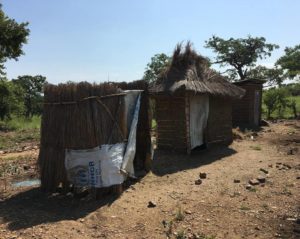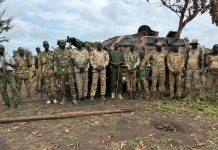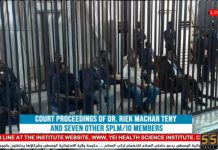
Author: Ojok Michael
Early this year residents of Paimol County, in Northern Uganda’s Agago district, presented about 40 square kilometers to the UNHCR through the Office of the Prime minister (OPM). They want the two partner organizations to consider creating a refugee settlement center on the property. But the deal has hit a deadlock; following the drastic decrease of new arrivals mainly from South Sudanese.
The sluggish pace to reach decisions either to consider establishing new refugee settlement center or not, on the new available space, leaves residents of Paimol County in doubt.
The offer (of the space) is not completely free, though. In exchange for the unused land, the residents want to see some amenities put in place. They expect UNHCR together with the OPM to meet their demands.
“Among the conditions set by the locals include; construction of schools, health facilities and opening of roads among other social services in the County,” the district Chairperson, Leonard Opio, said.
On the other hand the Minister for Disaster and Preparedness, Hillary Onek, attributes the delays to the UNHCR.
With the number of South Sudanese refugees shrinking on a daily basis, he wishes not to make any promises yet. For this plus other reasons, he suggests the humanitarian agency (UNHCR) is reluctant to make quick decisions too.
The Office of the prime minister carried out an assessment on the land in question, which measures up to over 40 square kilometers. It is expected to support around 200, 000 refugees. More on the subject. https://training.dw.com/cbn/why-refugees-are-a-welcome-group-in-uganda/
Even though no official report on the assessment exercise has been made public about their findings, it is likely that the land is approved for human settlement.
The Minister who is also the Member of Parliament of nearby Lamwo district says at this point his office can only hope that all will go well.
“The establishment of the Paimol Refugee resettlement camp is going to depend on the influx of refugees majorly from South Sudan,” he said. Nevertheless he adds that in the absence of South Sudanese refugees, his office in agreement with the UNHCR could relocate refugees from DR Congo, who are presently settled on the other side of the country, in the West.
The region, in the West of the country, has been receiving influx of refugees escaping brutality in Eastern Democratic Republic of Congo (DRC,) allegedly between the agriculturalist Lendu and pastoralist Hema tribes of Ituri region. More on Hema-Lendu conflict in the Congo Research Group, by Thijs Van Laer, Programme Manager Causes of Exile at International Refugee Rights Initiative (IRRI): http://congoresearchgroup.org/guest-blog-whats-happening-in-ituri/
Majority of these refugees, escaping, cross Lake Albert to enter Uganda.

Notably, Uganda’s Adjumani district refugee desk is receiving on average 230 individuals – coming in from South Sudan, every week. This number, however, does not come anywhere close to the records taken in the past. The previous records reveal thousands of people pouring in every day – seeking refuge.
It is not clear if the records were taken out of proportions; as it has recently been reported. Or actually the present numbers of South Sudanese escaping the violent conflict, arriving, has coincided with the relative calm in some parts of their country. Only time will tell when the biometric exercisehttps://training.dw.com/cbn/ugandas-refugee-law-is-admirable-but-the-government-is-marred-with-irregularities/, which is intended to establish accurate numbers is completed.




